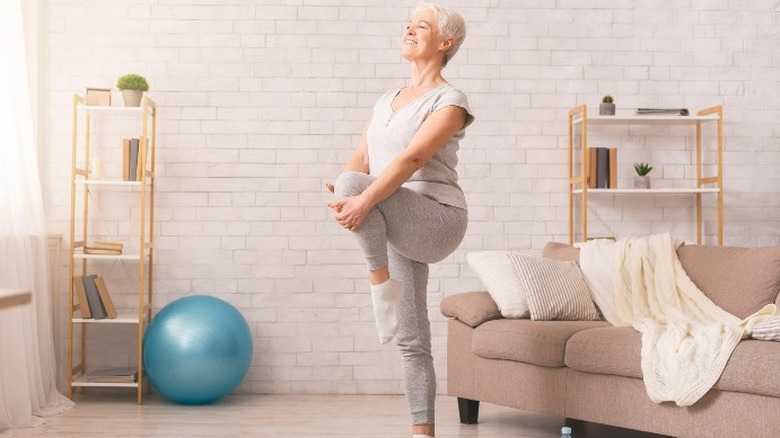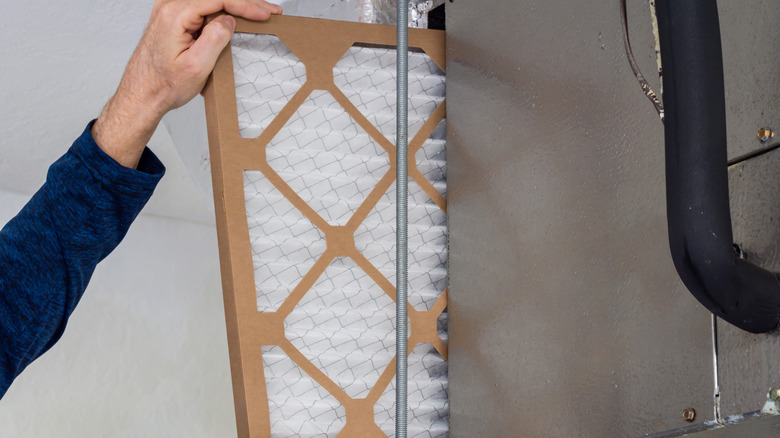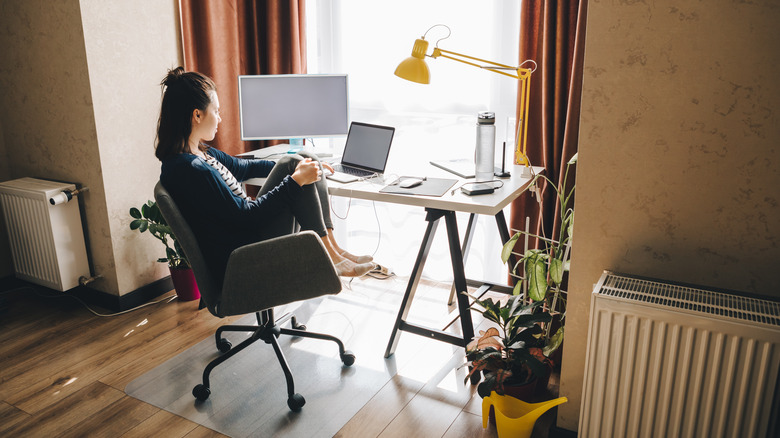Healthy Home Trends Of 2022
You've probably changed the way your home is set up a number of times over the years depending on decorating trends, your stage of life, and how you've needed your home to function. According to Forbes, over the past two years, Americans have shifted focus to making their homes feel safe and healthy, all while figuring out how to use the same square footage in unexpected ways.
Thankfully, the days of 24/7 isolation and stay-at-home restrictions have started to subside. However, our homes continue to change in order to accommodate new ways of staying connected, socializing, studying, and working from home part or full-time. Not surprisingly, decluttering and getting help from home organizers have been on the rise as people make room for more activities within the same living space, reported The New York Times. Here's a look at some of the healthy home trends that you can incorporate in 2022.
Ensure yourself a good night's sleep
A good night's sleep is as essential as food and water. It's critical to both your health and how well you function in all areas of your life. If that's not your current reality, here are some affordable ideas for getting into a dream state.
Avoid the stimulation of TV and the blue light emitted from phones, tablets, and laptops, recommends the Sleep Doctor. Bedtime stories put children to sleep and can do the same for you if you read from a paper book before bed. Room darkening shades or black-out curtains will make sure the street lights and sunrises don't wake you up before you're ready.
Next, check the room temperature. Your body temperature lowers as you sleep. If the air temperature in your room, or under the blankets, is too warm it can prevent you from staying asleep. The ideal room temperature is around 65 degrees Fahrenheit, per Sleep Foundation. While air conditioning is great, a ceiling or box fan can help too. It's also possible that your memory foam mattress may be trapping heat. If it's not the right time to replace it, try adding a mattress topper made from materials that keep you from getting hot, such as graphite and cooling gel.
Focus on self-care and wellness
Many people grow up learning to care for others but forget to make room for self-care. Self-care is not selfish. Remember the message from airplane safety to put on your own air mask before you help others? Self-care gives you the well-being that you deserve, and need, so that you can fully engage in other areas of your life, says School of Self Image. Start by taking time to do something for yourself. Soak in the bathtub or buy a luxurious skincare product to use in the shower. If you've been promising yourself to spend 10 minutes every morning on some simple stretching or yoga moves, get set up with everything you'll need the night before. Then do it immediately upon waking before anything else distracts you.
Whether you're looking for a creative outlet, to add more music to your life, or to access an online exercise routine, there are many ways you can incorporate activities for self-care and mental health, per University of Washington. Check with friends and neighbors for craft materials they may want to give away so you don't have to invest a lot when trying something new. Create a free playlist with an app like Spotify so you can listen to music throughout the day. Maybe you just want to take a cup of coffee or tea outside and sit and daydream for 15 minutes. Indulge yourself and you'll feel more energized to handle the other parts of your life!
Improve indoor air quality
When you work in an office building, someone else is responsible for monitoring the air quality by changing air filters and making sure that air purifiers are working. At home, however, that's your job. Indoor air pollution at home isn't something we think of too often. However, a 2020 study from Texas A&M School of Public Health found that air pollution was actually significantly higher in study participants' homes than in their office environments. According to the U.S. Environmental Protection Agency, items like disinfectants, air fresheners, paints, solvents, and hobby supplies can be sources of volatile organic compounds (VOCs). These gasses are released into the air where they can cause headaches and irritate the eyes, nose, throat, and skin. In rare cases, they can also cause more significant problems to the liver, kidney, and central nervous system. Look for products that are marked low- or no VOCs, and that have the Safer Choice label from the Environmental Protection Agency (EPA), which identifies the products with the safest possible ingredients.
Don't forget to clean or change the filters in your central air conditioning, your kitchen vents, and your vacuum cleaner. Frequency recommendations can be found in most user manuals. You can also add room air purifiers to various areas of your home.
Relax outside
Take advantage of opportunities to extend your living space outdoors, even if you can only do so for a short time based on your local weather or work schedule. Spending time outside is a great way to relieve stress and boost your energy. Ontario Parks explains that heading out into the great outdoors causes stress hormones to decrease while making endorphin and dopamine levels increase, which helps us feel happier.
Create a little zen area in your yard with a recirculating water feature. This can attract birds and provide an area for them to drink and chirp away while you listen to the soothing sound of flowing water. Ontario Parks further states that these sounds of nature can help you de-stress even more. Place a chair or hammock nearby and add some shade if you need it. You could also pitch a tent in your very own backyard and sleep outside for a camping adventure without leaving home. Potted plants and shade screens can be used to create a private garden spot where you can enjoy your breakfast or read a book.
Adjust your work space
While there can be many advantages to working from home, it may require some adjustments to carve out a space that allows you to work quietly and comfortably. Some people may be able to transition to a laptop, while others need room for multiple large screens sitting side by side. First, try to get the proper alignment between your body and your equipment, recommends Lancaster General Health. If you're working at the kitchen or dining room table, your keyboard and monitor may be at the wrong height, causing neck, shoulder, and wrist pain. In order to keep your elbows to about a 90-degree angle, you may need to use a detachable keyboard and an adjustable height keyboard support. An ergonomic chair or stool allows you to adjust the height so your feet are flat on the floor. Finally, raise your monitor so you are not flexing your neck downward.
To relieve eyestrain, create a visually interesting focal point so you can look away from your screen periodically. If possible, set up your workspace near a window to let in natural light. It's fine if you don't have a direct view to the outdoors, though. Simply adding something eye-catching to the wall beyond your workspace can be beneficial. Hang artwork, photographs, or mementos that get you thinking about your next vacation. In darker spaces, be sure to add whatever type of lighting you need with lamps.





